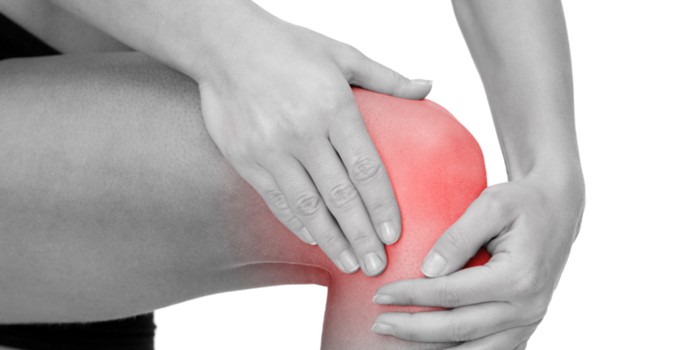To better understand the usefulness of a total or partial knee replacement surgery, it is necessary to understand how healthy joint works. The knee joint is one of the largest and most complex of the body. It connects the femur, in its lower part, to the tibia, at its upper end, and is protected anteriorly by the patella. The large ligaments attached to the femur and tibia brings stability, while the long muscles of the thigh give strength to the knee.
The cartilage covers all the contact surfaces of the bones and completely covers the patella, allowing the tibia and femur to move easily and smoothly in the cavity, facilitating their reciprocal sliding.
A diseased and aching knee generally presents areas in which the cartilage is wholly or partially eroded. The most common cause is osteoarthritis, a disease that causes joint wear. When the cartilage disappears, the bony ends of the joint rub against each other and cause pain and stiffness.
The disease usually occurs from middle age onwards with symptoms ranging from mild discomfort to intense pain of the joint. Depending on whether this process is limited to only one knee region or spread to the entire joint, the most appropriate type of intervention is chosen.
The best knee replacement surgeon in Bangalore is Dr. Santosh Kumar Hakkalamani of BGS Gleneagles Global Hospital. He has over 21 years of experience in joint replacement surgery. The cost of knee replacement surgery in India varies between USD 4000 and 6000 with five days stay in hospital.
Total or partial knee replacement surgery
In the knee, there are three different critical points of contact between the bones – two of these contact points are between the femur and the tibia, and one is between the femur and the patella.
A total prosthesis is used when all these contact points are damaged and are replaced with artificial prostheses. This type of prosthesis is the most frequently used.
On the other hand, a partial prosthesis is used if only one or two points of contact are affected.
A uni-compartmental prosthesis is naturally less invasive than a total prosthesis, and the post-operative rehab will be faster and less painful for the patient.
In the past few years, there has been a revolution in the field of materials used in prostheses, especially as regards their durability. The implant is designed to create a new functional joint that prevents painful contact between bones. The surgeon can decide whether to replace the entire knee or only part of it, depending on the conditions and the extent of wear that has affected the knee.
Surgery procedure
According to the hospital, the patient’s hospitalization can take place either on the morning of surgery or, in selected cases, the evening before the operation. The doctor will indicate the exact time for admission.
On admission, routine examinations (electrocardiograms, blood tests, x-rays, etc.) are performed, which usually precede a surgical examination.
The type of anesthesia, whether general or regional, will be discussed with the anesthesiologist at this stage. The intervention is carried out in a standard surgical room, normally equipped and with nursing and anesthetic staff present.
The procedure lasts from 45 minutes to an hour and a half, depending on the pathology to be addressed. Immediately after completion of the procedure, the surgeon will treat the wounds with a soft, flat compressive dressing.
Rehabilitation
After the operation, a period of observation follows in a room adjacent to the operating room where vital signs are kept under control. Most patients are discharged within 2-3 days.
During the first 48 hours after surgery, it is possible to reduce swelling and discomfort in the area treated surgically, thanks to the application of cold packs.
The rehabilitation of the operated limb is fundamental for the recovery of its functionality. The hospital provides therapists capable of developing a personalized rehabilitation program based on the patient’s condition.
It is good to keep in mind that it takes several weeks to obtain complete healing of the intra-articular tissues, and some months before reaching complete fitness.

